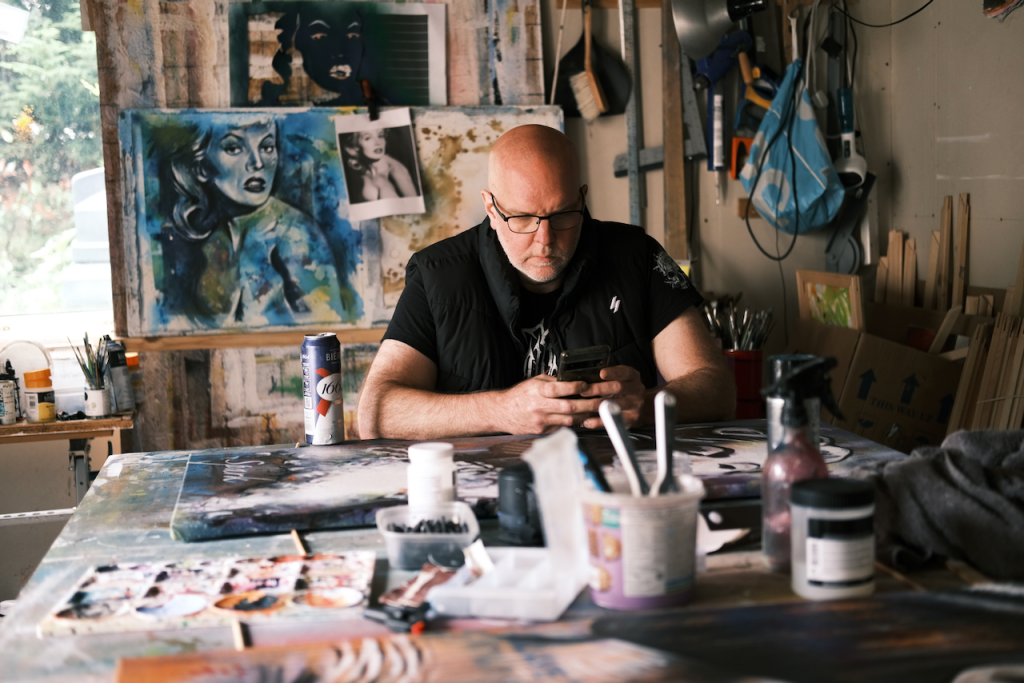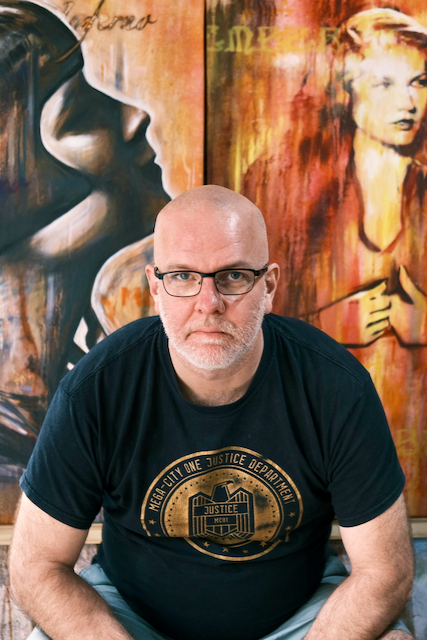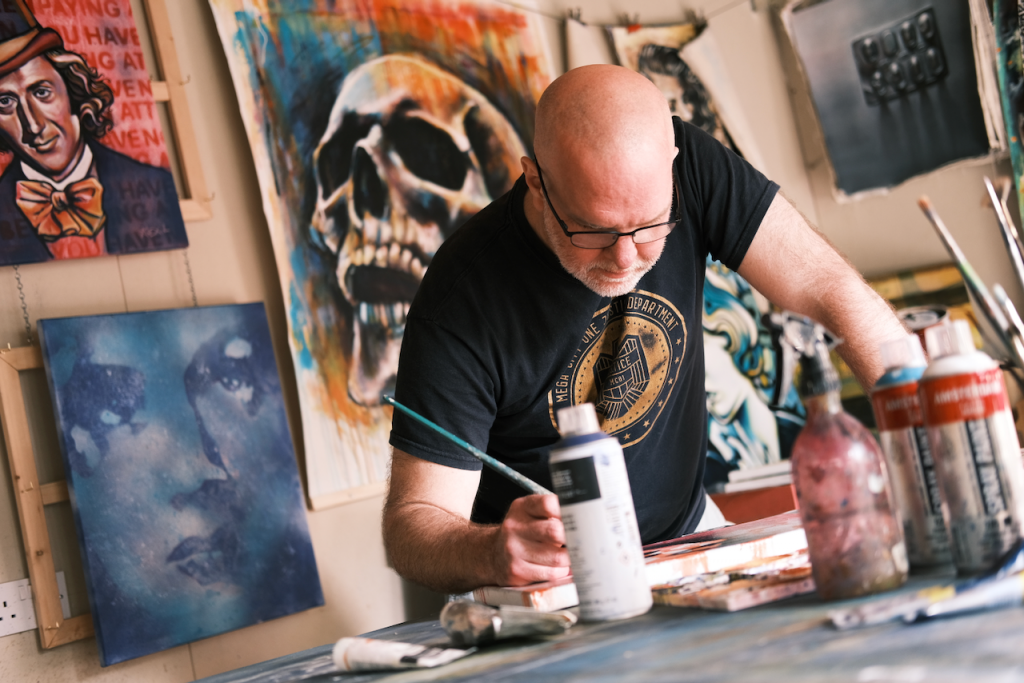Your basket is currently empty!
Are you the hero of my story?

Do you want a sense of what it’s like to be a trying-not-to-starve artist? Well that’s pretty easy to summarise: you spend most of your allocated art time on thinking about or executing actions and strategies for promoting yourself. Sometimes you snatch a bit of time to make art. But even in those cherished moments of blissful, solitary creativity, you still need to be tuned into your marketing and promotional obligations. So when I’m at my easel or workbench, I often stop to think, “is this moment Instagramable?” At which point I shut off the creative firehose, attach my camera to its tripod, and strike a pose.

Up until not long ago most of my “promotional assets” were studio shots from my phone, without me in them, or arm’s length selfie videos. But I recently managed to get my SLR camera attached to my phone so that I can use it as a remote and get some pictures with me in them. I think they look pretty good. More importantly they do pretty well (by my standards) on social media. Better, at least, than the images that I share without me in them. Which baffles me.
I’m not a naturally showy person. Any deference to vanity I make is more driven by a need not to stand out than any narcissistic or fashion conscious motivations. The most attention I pay to what I look like is choosing which of my 100+ t-shirts to wear (almost all black, almost all #metal). I’m not ashamed of my appearance, I just don’t spend any time thinking about it.
(Digression: this is a privilege of being a white male autistic – blending in is a common anxiety-driven compulsion for autistics, a behaviour commonly known as masking, for many reasons that I won’t go into here. Blending in is a lot less onerous if you’re a white male. I suspect I don’t have to explain why.)
So it’s baffling to me that anyone would want to see pictures with me obscuring all the lovely paintings that I slaved over. It honestly never occurred to me that people would ever want this, and was initially scornful of all the “look at me aren’t I cute in front of this giant, abstract expressionist think-piece” photos I saw on Instagram. It just seemed vain.
But it turns out that the voyeuristic social media public like to peek in. It occurs this is related to the fact that art punters are more likely to buy in-person if the artist is also there in-person. This, I have learned, is because most art buyers are not just buying a pleasant, well-crafted hand-made object. They’re buying into an experience. Yes, the experience of hanging that thing on their wall and admiring it every day, but also the experience that lead up to them buying it, and a whole bunch of prior and subsequent experience that you’ll never be party to or remotely understand. Art buying is a journey, a narrative. And the more plot points within that narrative the better. And stories need people. It’s easy, as an artist, to believe that the buyers are characters in your story, but it’s the other way around, you are a bit-part character in theirs – their story is more important than yours. Or at least it needs to be if you want to sell any work.
Knowing what I know now, I understand and empathise with this, and feel churlish for my prior stance on apparently exhibitionist artists. Contrary to popular conceptions, my experience is that artists are an introverted mob, much like authors. The whole point of time in the studio is time on your own. Letting people into your studio, even at a distance of however many miles and screens, feels a little like a violation. But let them in you must, because you need to turn up in their story in-person, or at least in-avatar, which usually means in-photo or in-video and most definitely in-social-media-posts, and sometimes even in their house.
So here I am. In your story. Oh, and in case your were wondering, I am the villain, and I’m here to steal your soul…

